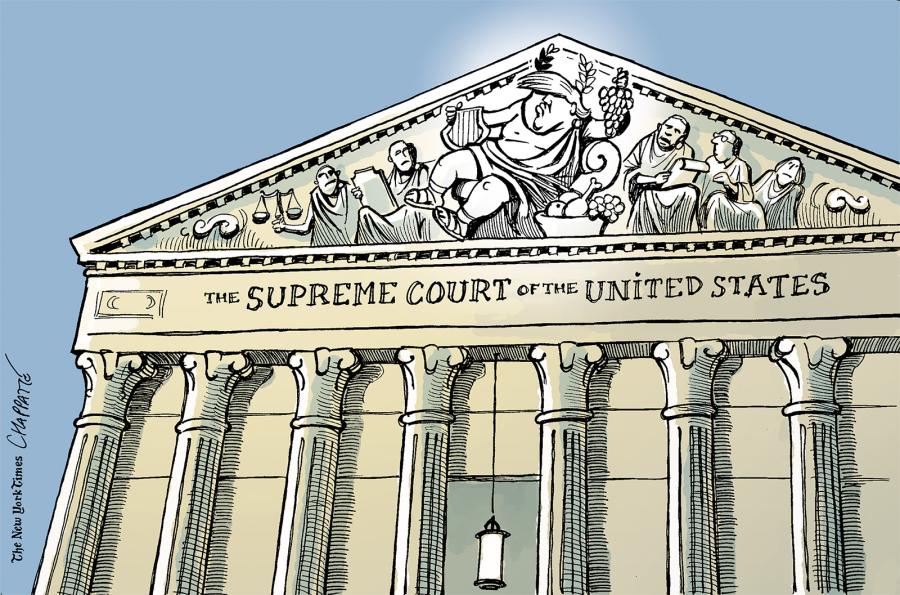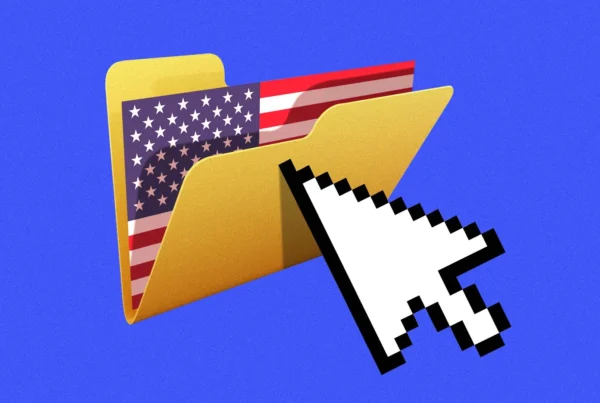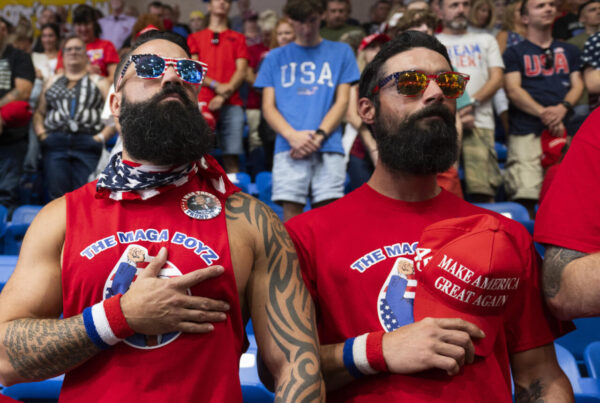The Supreme Court could have been a beacon of hope amid the flurry of executive orders emerging from the White House. The reality is that it serves at the pleasure of the President.
In a system of checks and balances, the arguably most important branch is the one devoid of politicians: the judicial branch. The one branch of government that operates under the illusion of neutrality. The one that guarantees a fair trial, or at least, a non-political trial.
In the past decade, the US Supreme Court has faced growing scrutiny, as its mantra—”Equal Justice Under Law”—seems to fall short in practice. In fact, the Supreme Court seems to be transforming into more of a political spectacle than an actual Court. It’s simply turned into yet another political body — the one thing it shouldn’t be.
In the brief period in which Trump has been president, he has issued a splurge of new executive orders. Many concern immigration, rolling back energy and environmental protection, and withdrawing the US from the Paris Agreement. One of the most controversial ones was ending birthright citizenship without legal authorization.
This policy clashes with the 14th Amendment, which states, “All persons born or naturalized in the United States, and subject to the jurisdiction thereof, are citizens of the United States and of the State wherein they reside.”
The order has been blocked by US District Judge John Coughenour in Seattle, who called the order “blatantly unconstitutional”.
What was Trump’s response? When asked whether he expected at least five of the members of the Supreme Court to support him, he said yes. “I just think we’ll end up winning in court, in the Supreme Court. I think we’re going to win that case. I look forward to winning it.” The one branch that could possibly set a stop to the madness gripping the United States is considered an ally of the President.
And when the justices, seemingly cherry-picked by the president, do not align with him, such as in the recent emergency Supreme Court decision where justice Amy Coney Barrett rejected a Trump administration attempt to avoid paying USAID contractors, as ordered by a federal judge, the backlash is fierce. MAGA supporters have aimed she is not “sufficiently aligned with or loyal to Trump”. The Court’s perception of politicization is upheld by the public, further deteriorating the Court’s neutrality.
The legality of Trump’s actions has been consistently questioned. Courts have already faced challenges to the declaration that the federal government will only recognize two genders. They are also facing lawsuits against the departure from policy that encouraged ICE officials to avoid places of worship. The entire Fork Directive email, over federal employee buyouts, is in many ways inauthentic. The main challenge of the lawsuits is whether the President’s actions are violating a standard established in a law known as the Administrative Procedure Act.
According to NPR, the APA is essentially a guardrail for all regulatory actions coming from the executive branch, to protect from “arbitrary and capricious” agency actions. This means the agency’s policy is so absurd it is considered arbitrary, hence canceling enforcement. The issue with many of the challenges entered into courts, and even some blocks, is that they are temporary.
Temporary pauses mean there may be more actions pursued—not to mention the very real possibility of non-compliance from the executive. What’s even trickier, is that the federal government can appeal each time a court determines a policy to be unlawful. And where are these appeals expected to go? To the Supreme Court.
These challenges being potentially decided by the Court are scary, even though it’s the institution that allegedly protects the rights of all citizens and serves as the safeguard of the Constitution. Yet it is the reality for many Americans. According to research by the Pew Research Center, favorable views of the Supreme Court near historic lows as of August 2024. 55% of Americans say that the justices are doing only a fair or a poor job of keeping their political views out of their decision-making.
Studies have shown that the Court’s turn to the right has polarized its public approval and legitimacy. Dobbs and the decisions in the 2021-2022 term undermined trust in the Court, polarized views of the Court along partisan lines, and increased support for reforming the Court. The decision which overturned Roe was weakly rooted in legal reasoning, with Scalia referencing Sir Mathew Hale, who condoned marital rape, as part of his reasoning.
Additionally, the majority when deciding to overturn Roe decided that reliance interests, meaning the social and economic impact of the decision on women, did not need to be considered. In essence, Dobbs was decided before the court even heard the case – the legal reasoning was simply thrown together in order to write a decision.
These feelings of declining approval and legitimacy were not short-term, but have persisted since then. It has almost become a well-accepted fact that the Court is politicized. The neutral body of justice is political.
The Court is not only ideologically conservative or considered politicized, its justices are under intense ethical scrutiny. In confirmation hearings, Democrats and Republicans should not be voting along party lines. When choosing a justice, who is meant to be neutral regarding the law, there should be bipartisan support for confirming a qualified judge. But because of the polarization of the United States, it did not. The Court’s members are flagrantly unethical and yet are trusted to make some of the most significant decisions that will affect the lives of millions for decades to come.
The notable examples of these ethical violations are surrounding Justice Kavanagh and Justice Thomas. Kavanaugh’s hearings were nothing short of dramatic. Yet, they brought up significant allegations, notably Christine Blasey Ford’s accusation of sexual assault.
Kavanaugh allegedly, while drunk, sexually assaulted Ford at a party in Montgomery County, Maryland while both were in high school. Kavanaugh eventually got confirmed, with a 51 to 49 vote, along party lines.
“Wasn’t it inarguable that a Supreme Court justice should be held to the highest standard? A presidency you could win, but to be a Supreme Court justice, you needed to live your perfection,” Ford detailed in her memoir. “These nine people make decisions that affect every person in the country. I figured the application process should be as thorough as possible, and perhaps I could be a letter of (non)reference.”
Americans have past alleged sexual abusers sitting on the highest bench in the land. Additionally, an inquiry by Sheldon Whitehouse found that the Trump administration protected Kavanaugh from facing a full FBI investigation. The investigation concluded that the White House and FBI “misled the public and the Senate”. The investigation was delayed by the branch’s passivity.
“This report shows that the supplemental background investigation was a sham, controlled by the Trump White House, to give political cover to Senate Republicans and put Justice Kavanaugh back on the political track to confirmation.” Whether or not the allegations were true, this kind of character should not be sitting on the highest court of the land.
Justice Thomas is the second justice under intense scrutiny. During his confirmation in 1991, he faced accusations of sexual harassment by a former aide. Recently, however, it came to light that Thomas had accepted for more than twenty years luxury stays from a billionaire known for donations to the Republican Party. His wife, Ginni Thomas, was a lobbyist and activist involved in Trump’s crusade to falsely prove that the 2020 election was stolen from him.
Because of this, Democrats called for Thomas to recuse himself from any political decisions because of a conflict of interest. Needless to say, he did not, going on to then rule in Trump v. US (2024), which surrounded Trump’s involvement in the January 6th insurrection. The decision effectively broadened the scope of presidential immunity, allowing any of the President’s “official duties” to be protected under immunity.
However the range of these duties, are not explicitly outlined, with Trump’s involvement in January 6th seemingly included as protected, even though they were not official, nor presidential. As Senator Not only is it a bleak prospect if the lawsuits challenging executive orders arrive at the Supreme Court, but the Court also granted Trump essential immunity from criminal acts in Trump vs USA 2024. Dick Durbin tweeted, “The highest court in the land shouldn’t have the lowest ethical standard.” And yet, it seemingly does.
The system of checks and balances relies on the three branches: executive, judicial, and legislative. The executive is extending its power. The Legislative branch? Congress is majority Republican, in the Senate and in the House. Few Republican legislators seem inclined to stop any of Trump’s recent actions, let alone stand up to him.
The Judicial branch? Federal courts are going to be overwhelmed by the number of lawsuits and challenges they receive in the coming months, after only a few weeks of a four-year-long term. Should the challenges reach the Supreme Court? America is truly on her own.
Cover credit : Chappatte for the New York Times
Other posts that may interest you:
- Bienvenue Tech-nocracy
- A Part of All or a Part of None?
- Intended to Unite but Slippery in a Fight: The Double-Edged Blade of Language
- Ready for Round Two? America is Headed for a KO.
- Boo! The Spooky Reality of Gen-Z Dating
Discover more from The Sundial Press
Subscribe to get the latest posts sent to your email.





